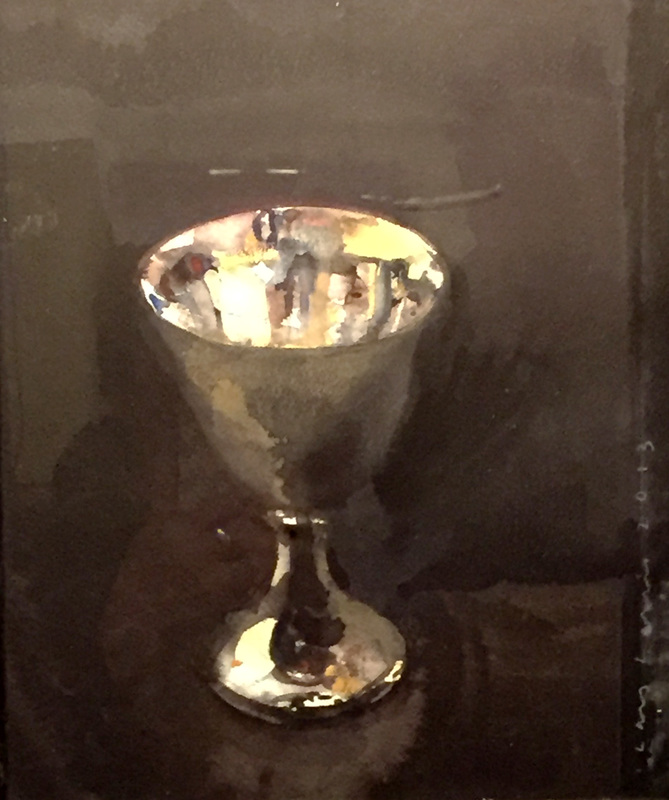Hare are some trees to climb.
Practice simplifying the shapes. What you see when you squint is pretty much what belongs in a paining.
Hare are some trees to climb.
Practice simplifying the shapes. What you see when you squint is pretty much what belongs in a paining.
Seeing positive and negative shapes involves a fundamental skill set. Painting silhouettes is great practice. You probably see more than one way to approach the task. For example, should you paint the road? Should the cement truck be swallowed up in the dark, or should it be reserved as a negative shape? What about the sky? I'll leave those decisions to you. Make it easy or challenge yourself
Every now and then a subject comes along that can be understood as a sequence of layers that progress from ,pale general statements to more specific, middle value interpretations. and on to fine dark detail. Here's an example of a subject that invites a broad treatment, placing light shapes on top of white paper, then making the middle value washes and strokes right on top of the lights, and finally, putting the darks on top of the middles. This clarity of seeing what follows what leads to confident painting.
Try a simple version of one of these images. Before you begin painting ask what comes first. Then what?
\
Unfortunate name. It's the shorthand way to describe the process of surrounding shapes with noticeably different paint, such as darker or different in hue. You know, negative painting.
When I am painting light and shadow I find it useful to ask "what is the dominant color?" It is almost always a cooler, darker, and more neutral version of the surface it falls upon.
Here's a detail of an image full of shadows. Notice that the shadowed part of the yellow blocks are still mostly yellow, even though the color is darker and more neutral than the color in sunlight. Yellow is the dominant color.
Take a look at the red cap on the white tank. How are the shadow colors different from where they are in sunlight? Like the yellow shadows, the red shadow is darker than the sunlit area of the cap. What is the dominant color of the red cap in shadow? Still red, right?
Now what about the shadow on the white tank? It's pretty easy to see that it is darker. Is it cooler, as well? Is it more neutral?
The photos below offer opportunities to practice observing and mixing shadow colors. If you'd like to create a context for the shadows feel free to make a proper painting from one of the scenes. If you just want to experiment with the colors you can try adjusting how light and dark they can be, or make the dominant color more or less intense, or more saturated. See if you can find the point beyond which the shadows still look natural.
So far, in class we've done more work from photos than from life. This week's homework exercise puts your understanding of seeing in layers to work on a simple 3-D object, like an apple,
